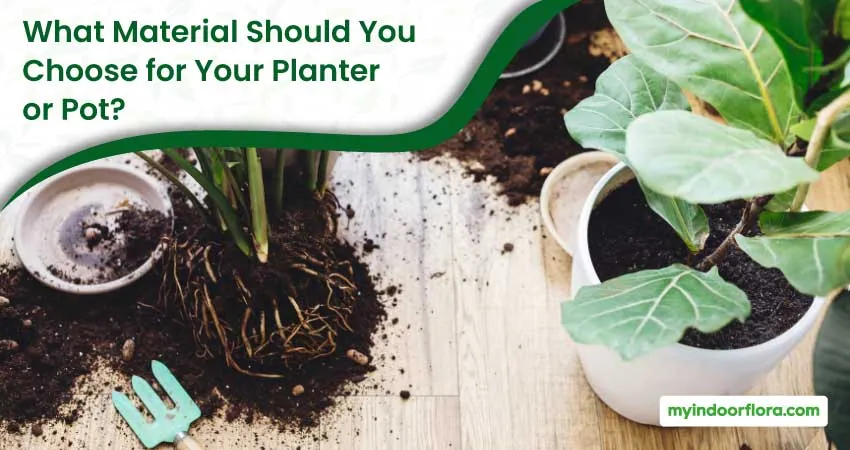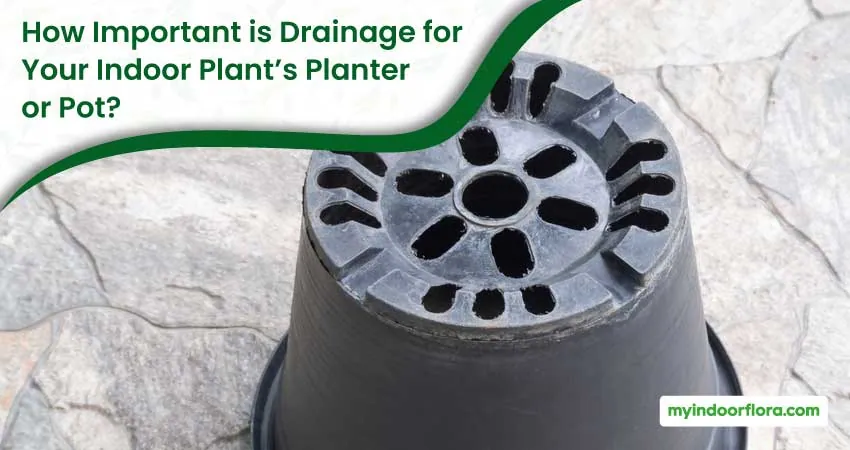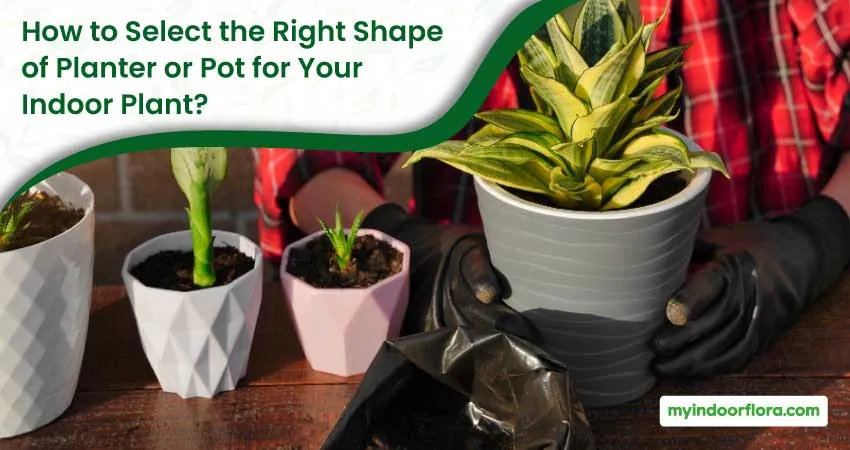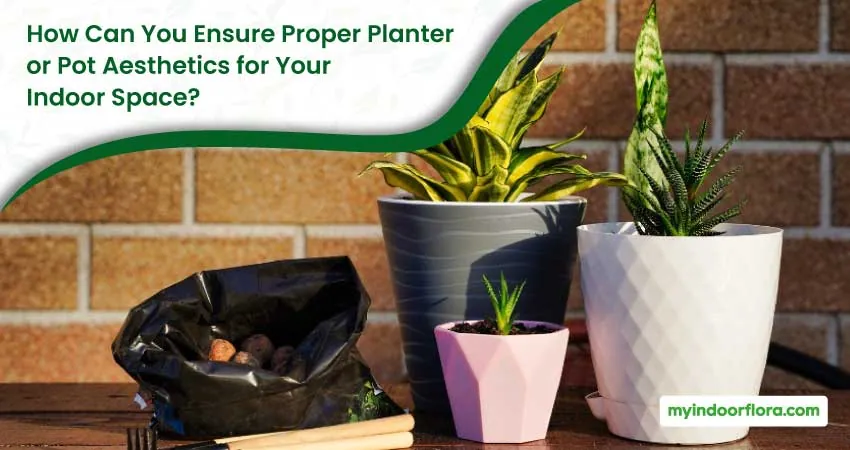Choosing the right size planter or pot for your first indoor plant is a crucial decision that can significantly impact the plant’s growth, health, and overall success. According to a study published in the journal HortScience, the appropriate planter size plays a vital role in promoting optimal root development, which is key to ensuring a healthy and thriving indoor plant.
This article provides an in-depth, comprehensive guide to selecting the perfect planter or pot for your indoor plant, taking into consideration factors such as size, material, drainage, shape, and aesthetics. By incorporating practical examples, actionable tips, and scientific insights, we aim to provide you with the most definitive resource available online to help you make an informed decision for your plant’s well-being and the enhancement of your indoor space.
How to Determine the Right Size Planter or Pot for Your Specific Indoor Plant?

A plant’s root system and growth pattern play a significant role in determining the right size planter or pot. Different plants have varying root structures, such as shallow or deep-rooted plants, which require different pot sizes.
- Importance of root space for healthy plant growth: Providing adequate root space is essential for healthy plant growth. When roots have ample space, they can efficiently absorb nutrients and water, promoting the plant’s overall health. Rootbound plants, on the other hand, may experience stunted growth, reduced flowering, and increased susceptibility to pests and diseases.
- Differences between shallow and deep-rooted plants: Shallow-rooted plants, such as succulents and ferns, require less soil depth, making them suitable for shallow pots. Deep-rooted plants, including many houseplants like Fiddle Leaf Figs and Monsteras, require deeper pots to accommodate their extensive root systems.
Considering the plant’s mature size
When selecting a planter or pot, it is essential to consider the plant’s mature size, which can be found on plant tags, care guides, or online resources. It is crucial to factor in both vertical and horizontal growth.
- How to find information on your plant’s mature size: Consult plant care guides or online resources, such as the Missouri Botanical Garden’s Plant Finder, to determine your plant’s mature size.
- Factoring in vertical and horizontal growth: Ensure your planter or pot can accommodate both the height and width of your plant at maturity. For instance, if you have a plant that grows 3 feet tall and 2 feet wide, select a pot that is at least 2 feet in diameter and 1 foot deep.
What Material Should You Choose for Your Planter or Pot?

The material of your planter or pot will depend on several factors such as weight, durability, aesthetics, cost, and the specific needs of your indoor plant. Here are some commonly used materials and their pros and cons.
- Ceramic: Ceramic pots are attractive and provide good insulation. They’re also heavy, which can provide stability for larger plants. However, they can be expensive, may break easily, and are heavier to move around.
- Plastic: Plastic pots are lightweight and affordable, and they retain moisture well. But they may be less attractive, less durable, and less breathable than other options.
- Terracotta: Terracotta pots are breathable, have a classic appearance, and promote healthy root growth. They are, however, heavy, fragile, and may dry out quickly.
- Metal: Metal pots are durable and stylish. However, they can heat up in sunlight, may rust, and are less breathable than other materials.
- Wood: Wood pots have a natural look and can be long-lasting. However, they require maintenance and are susceptible to rot.
| Material | Advantages | Disadvantages |
|---|---|---|
| Ceramic | Attractive, heavy (provides stability), good insulation | Heavy, can be expensive, may break easily |
| Plastic | Lightweight, affordable, retains moisture well | Less attractive, less durable, less breathable |
| Terracotta | Breathable, classic appearance, promotes healthy root growth | Heavy, fragile, may dry out quickly |
| Metal | Durable, stylish | Can heat up in sunlight, may rust, less breathable |
| Wood | Natural look, can be long-lasting | Requires maintenance, susceptible to rot |
How Important is Drainage for Your Indoor Plant’s Planter or Pot?

Proper drainage is crucial for your indoor plant’s health, as it prevents issues like root rot and overwatering, while maintaining soil moisture balance.
- Preventing root rot and overwatering: Root rot occurs when the roots are constantly exposed to excess moisture, leading to decay and, eventually, plant death. Overwatering can also cause root rot, as well as hinder the plant’s ability to take up nutrients. Proper drainage helps avoid these issues by allowing excess water to escape from the pot.
- Maintaining soil moisture balance: Drainage helps maintain the right balance of moisture in the soil, preventing it from becoming too wet or too dry. This balance is essential for healthy root development and overall plant health.
Evaluating drainage options
When selecting a planter or pot, it is essential to consider drainage options such as built-in drainage holes or creating your own drainage system with rocks or pebbles.
- Built-in drainage holes: Many pots come with pre-drilled drainage holes, which allow excess water to escape. Ensure that your chosen pot has enough holes to provide adequate drainage for your specific plant.
- Creating your own drainage system with rocks or pebbles: If your pot does not have built-in drainage holes, you can create your own drainage system by placing a layer of rocks or pebbles at the bottom of the pot. This layer helps prevent the roots from sitting in standing water, reducing the risk of root rot.
How to Select the Right Shape of Planter or Pot for Your Indoor Plant?

When choosing the shape of your planter or pot, consider the specific needs of your indoor plant. Different shapes can impact root development, stability, and support.
- Round pots: Round pots are versatile and suitable for most indoor plants. They provide ample space for root growth and can accommodate various growth patterns.
- Square pots: Square pots are ideal for plants with spreading root systems, as they offer additional room for growth. They also fit well in corners and tight spaces.
- Rectangular pots: Rectangular pots work well for plants that require extra width, such as plants with shallow root systems or those with spreading foliage.
- Tapered or conical pots: Tapered pots are suitable for plants with taproots or those that benefit from a deeper soil column. The narrowing shape allows for more efficient use of soil and water.
Assessing the impact of planter shape on plant growth
The shape of your planter can affect both root development and overall plant stability and support.
- Root development: A pot with ample space for root growth promotes a healthy, well-developed root system. Choose a shape that provides enough room for your plant’s specific root structure.
- Stability and support: Consider the shape of the pot in relation to your plant’s growth habits. A pot with a wider base can provide more stability for top-heavy plants, while a taller pot may offer better support for plants with long, trailing vines.
How Can You Ensure Proper Planter or Pot Aesthetics for Your Indoor Space?

When selecting a planter or pot for your indoor plant, consider how its design will complement your existing interior decor.
- Matching colors and styles: Choose a planter that complements the color scheme and style of your space. For example, a modern, minimalist space may benefit from a sleek, white ceramic pot, while a rustic or bohemian-style room might call for a natural terracotta pot.
- Incorporating unique or artistic planters: Consider using unique or artistic planters to add visual interest and personality to your space. These planters can serve as conversation starters and help showcase your plant collection in a more engaging way.
Considering your indoor plant’s placement
The placement of your indoor plant can influence the type of planter or pot you should choose. Consider factors such as windowsills, shelves, floor-standing pots, and hanging planters when selecting the perfect planter for your space.
- Windowsills and shelves: For plants that require ample sunlight or are small in size, consider pots designed for windowsills or shelves. These pots may have a flat back or a compact design to fit snugly in these spaces.
- Floor-standing pots: Large or tall plants often require floor-standing pots. These pots should be sturdy and provide adequate support for the plant’s size and weight. Consider a pot with a wide base for added stability.
- Hanging planters: Hanging planters are ideal for plants with trailing vines or those that benefit from elevated positions. When selecting a hanging planter, ensure it can safely hold the weight of the plant and soil, and consider the materials and attachment method for proper support.
Conclusion
In conclusion, choosing the right size planter or pot for your first indoor plant involves careful consideration of factors such as the plant’s root system and growth pattern, planter material, drainage, shape, and aesthetics. By taking the time to research and select the ideal planter or pot for your specific plant and space, you can ensure your plant thrives while adding a touch of beauty and personality to your indoor environment. Don’t be afraid to explore your creativity and enjoy the process of finding the perfect planter or pot for your space.
